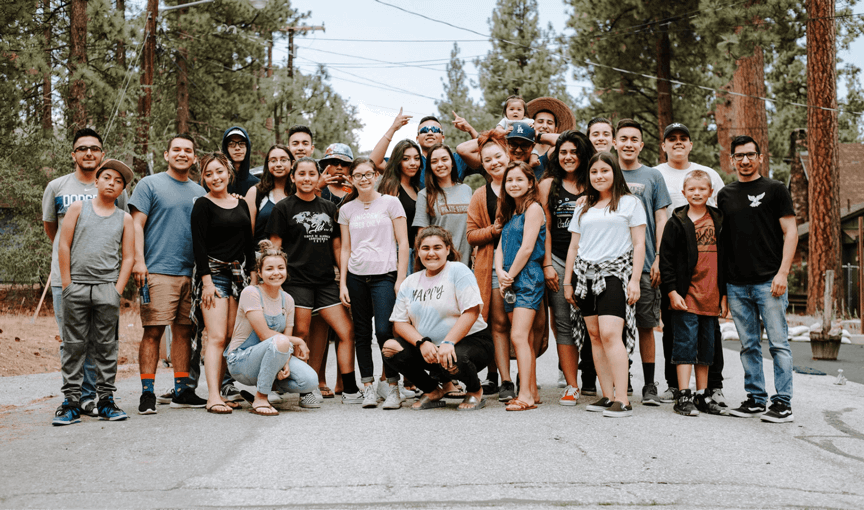Back in 2018, WASH United was directly implementing menstrual hygiene management (MHM) programs in India. Through our exchange with partners, we realized that many organizations were open to address MHM but lacked the tools—and the resources—to do so. Knowing that period education is vital to closing the gender gap and keeping girls in school, we set out to create a solution every organization could use: a powerful, easy-to-adapt tool that delivers impact across diverse settings and local contexts.
Instead of each partner developing their own materials, we decided to shift our focus: moving from direct implementation to specializing in the development and provision of scalable education resources on menstrual hygiene management.
We started by creating "Ruby's World", our first MHM Education Guide for South Asia, using a user-centered design approach. The demand was high, and versions for other world regions soon followed: "Rosie’s World" for Sub-Saharan Africa, "El Mundo de Rocío" and "O Mundo de Rosinha" for the Latin American region, and "Aalam Warda" for the Middle East and North Africa region. Today, more than 600 partners worldwide are using our materials — turning the collective impact we once envisioned into reality.
The MHM training is always conducted in a group setting. Depending on the context, it takes place in schools, communities, clubs, health centers, or camps for displaced persons. The training is delivered by teachers, trainers, healthcare workers, or peer educators, depending on the program and setting. It can either stand alone or be integrated into broader initiatives.
During the training, girls follow the story of a young girl entering puberty—a story inspired by their own experiences. This narrative helps them feel understood and connected to the main character. The story is combined with engaging activities, making the learning experience both fun and empowering. As a result, girls are not only educated about menstruation but also gain the confidence to manage their periods and are motivated to support one another. We call this the three E’s: Girls are educated, empowered, and engaged.
We launched the website in 2021 and have seen steady growth since then. Today, over 600 partners—including international NGOs, grassroots organizations, ministries, and actors in humanitarian settings—are using the MHM Education Guide. Its scalability and impact are increasingly recognized by governments and international organizations around the world. Among the INGOs using the Guide are World Vision, Water for People, and UN agencies such as UNICEF.
To give two examples of government uptake: In 2023, the Ministry of Education in the Democratic Republic of Congo adapted the Guide for use in 600 schools under a World Bank-funded project. In 2024, Ghana’s Ministry of Sanitation and Water Resources signed on to reach 1 million girls by 2026—and is already making strong progress toward this goal.
Once users register to access the Guide, they enter an automated user journey and are invited to provide feedback once a year. We use this feedback to continuously improve the Guide and ensure it remains state of the art. For example, we are currently shortening the Indian versions of the Guide after learning from our partners on the ground that more compact versions are needed for school settings, where time slots are highly competitive.
Adaptations are also part of our support for large-scale partners to fit their local context. This could include translating the Guide into a local language, adjusting content to reflect regional myths around menstruation, or highlighting typical period products used in the area. Sometimes, it is as simple as featuring a local sports star in the story to make it even more relatable for girls.
The WASH United logo is intentionally not on the cover. Instead, we offer partners to place their own logo on the cover of the Guide to strengthen ownership. Ultimately, our aim is to get the Guide out at scale, with a focus on impact rather than brand promotion.
Usually, program managers at NGOs or institutions download the MHM Education Guide and use it to equip their trainers, volunteers, or teachers to integrate period education into their programs. But the material is free and accessible to individuals as well.
Say you're a soccer coach based in Addis Ababa, Ethiopia, working with 15 girls aged 13–14, and you want to start a conversation about periods and empower them on the topic — you're in the right place.
Here’s how to get started:
- Visit wash-united.org and click "Get the Guide".
- Choose your region — Sub-Saharan Africa — and the language. In your case, you can choose between English and Amharic.
- After registering, you’ll receive an email with the full "Rosie’s World" Guide and additional support materials.
- Read through the Guide once or twice to familiarize yourself with the story. If you want more background, check out the Resource Book that also came with the package, which answers to common questions girls ask. Prefer visuals? Our support videos will walk you through the games and activities.
- Now print the Guide or load it on a mobile device.
With that, you're ready to lead your first MHM session — and chances are, the girls will love it!

.jpg)
.png)
